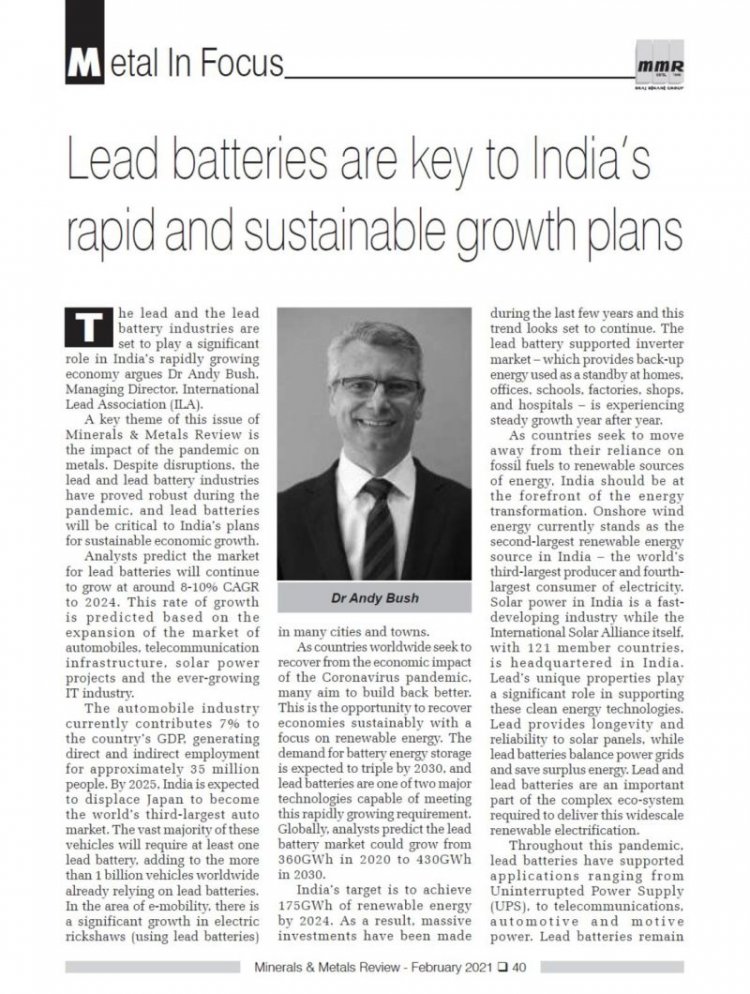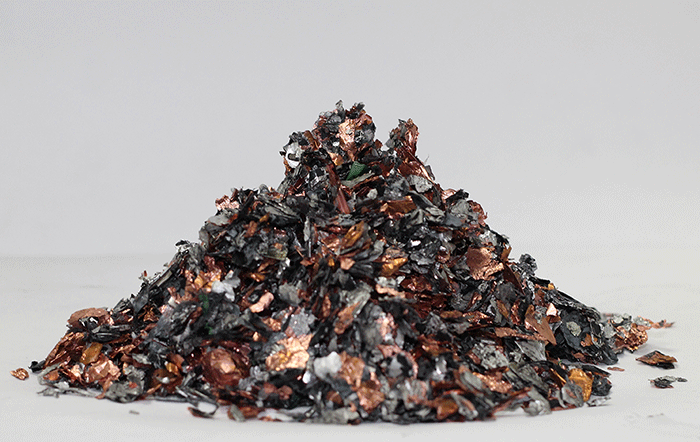Lead batteries are key to India’s rapid and sustainable growth plans - Dr Andy Bush, Managing Director, International Lead Association (ILA)
The lead and the lead battery industries are set to play a significant role in India’s rapidly growing economy argues Dr Andy Bush, Managing Director, International Lead Association (ILA). A key theme of this issue of Minerals & Metals Review is the impact of the pandemic on metals. Despite disruptions, the lead and lead battery industries have proved robust during the pandemic, and lead batteries will be critical to India’s plans for sustainable economic growth

The lead and the lead battery industries are set to play a significant role in India’s rapidly growing economy argues Dr Andy Bush, Managing Director, International Lead Association (ILA).
A key theme of this issue of Minerals & Metals Review is the impact of the pandemic on metals. Despite disruptions, the lead and lead battery industries have proved robust during the pandemic, and lead batteries will be critical to India’s plans for sustainable economic growth.
Analysts predict the market for lead batteries will continue to grow at around 8-10% CAGR to 2024. This rate of growth is predicted based on the expansion of the market of automobiles, telecommunication infrastructure, solar power projects and the ever-growing IT industry.
The automobile industry currently contributes 7% to the country’s GDP, generating direct and indirect employment for approximately 35 million people. By 2025, India is expected to displace Japan to become the world’s third-largest auto market. The vast majority of these vehicles will require at least one lead battery, adding to the more than 1 billion vehicles worldwide already relying on lead batteries. In the area of e-mobility, there is a significant growth in electric rickshaws (using lead batteries) in many cities and towns.
As countries worldwide seek to recover from the economic impact of the Coronavirus pandemic, many aim to build back better. This is the opportunity to recover economies sustainably with a focus on renewable energy. The demand for battery energy storage is expected to triple by 2030, and lead batteries are one of two major technologies capable of meeting this rapidly growing requirement.
Globally, analysts predict the lead battery market could grow from 360GWh in 2020 to 430GWh in 2030. India’s target is to achieve 175GWh of renewable energy by 2024. As a result, massive investments have been made during the last few years and this trend looks set to continue. The lead battery supported inverter market – which provides back-up energy used as a standby at homes, offices, schools, factories, shops, and hospitals – is experiencing steady growth year after year.
As countries seek to move away from their reliance on fossil fuels to renewable sources of energy, India should be at the forefront of the energy transformation. Onshore wind energy currently stands as the second-largest renewable energy source in India – the world’s third-largest producer and fourthlargest consumer of electricity. Solar power in India is a fastdeveloping industry while the International Solar Alliance itself, with 121 member countries, is headquartered in India.
Lead’s unique properties play a significant role in supporting these clean energy technologies. Lead provides longevity and reliability to solar panels, while lead batteries balance power grids and save surplus energy. Lead and lead batteries are an important part of the complex eco-system required to deliver this widescale renewable electrification.
Throughout this pandemic, lead batteries have supported applications ranging from Uninterrupted Power Supply (UPS), to telecommunications, a u t o m o t i v e a n d m o t i v e power. Lead batteries remain the dominant technology for telecommunications back-up demand, with a growth of 5GWh predicted between 2015 and 2030. Meanwhile, lead batteries dominate the UPS battery market, providing 92% of demand, with a 7.5GWh increase predicted between 2015 and 2030.
These are few examples of how the world has relied upon the lead battery industry throughout the pandemic and the growth expected. A s w e m o v e t o w a r d s establishing a more sustainable energy future, technologies that embody circular economy principles will be valued. Lead batteries are designed to be recycled at end-of-life and lead can be recycled infinitely with no loss of quality or performance.
Despite these opportunities, more work needs to be done to prevent informal and substandard lead battery recycling. Reports indicate that informal lead battery recycling still occurs throughout India. The International Lead Association (ILA) and partner associations are working with NGOs and other partners to form a global alliance to help improve standards in lead battery manufacturing and recycling





























